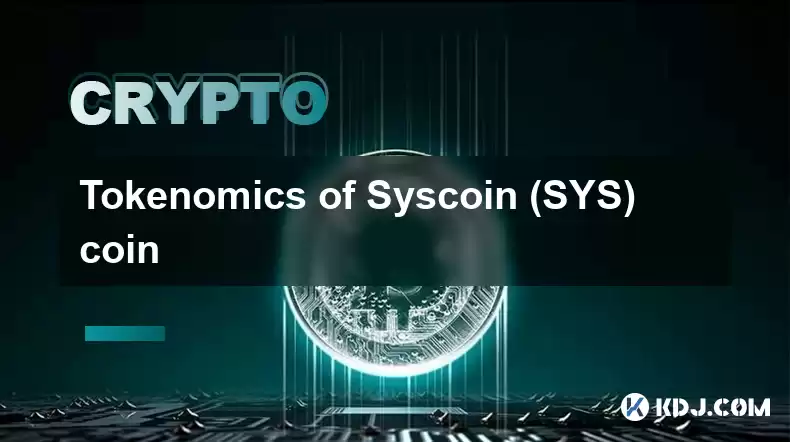-
 Bitcoin
Bitcoin $118300
-0.25% -
 Ethereum
Ethereum $4593
0.63% -
 XRP
XRP $3.099
-0.23% -
 Tether USDt
Tether USDt $1.001
0.09% -
 BNB
BNB $840.2
0.52% -
 Solana
Solana $192.6
-0.85% -
 USDC
USDC $0.0000
0.01% -
 Dogecoin
Dogecoin $0.2286
0.98% -
 TRON
TRON $0.3575
-0.50% -
 Cardano
Cardano $0.9437
1.93% -
 Hyperliquid
Hyperliquid $48.21
6.52% -
 Chainlink
Chainlink $22.33
-1.39% -
 Sui
Sui $3.826
0.89% -
 Stellar
Stellar $0.4272
0.26% -
 Bitcoin Cash
Bitcoin Cash $592.7
0.19% -
 Ethena USDe
Ethena USDe $1.001
0.06% -
 Hedera
Hedera $0.2528
0.25% -
 Avalanche
Avalanche $24.37
2.20% -
 Litecoin
Litecoin $120.5
-1.98% -
 Toncoin
Toncoin $3.493
2.53% -
 UNUS SED LEO
UNUS SED LEO $9.657
4.15% -
 Shiba Inu
Shiba Inu $0.00001293
-0.65% -
 Uniswap
Uniswap $10.93
-0.14% -
 Polkadot
Polkadot $3.981
-1.15% -
 Dai
Dai $1.000
0.03% -
 Bitget Token
Bitget Token $4.627
1.22% -
 Cronos
Cronos $0.1545
0.86% -
 Ethena
Ethena $0.7319
1.41% -
 Aave
Aave $309.9
-1.09% -
 Pepe
Pepe $0.00001108
-1.40%
Tokenomics of Syscoin (SYS) coin
SYS tokenomics include a limited supply, use cases such as transaction fees and staking rewards, and a distribution allocation that supports miners, team, investors, and the Syscoin ecosystem.
Dec 26, 2024 at 01:17 am

Key Points of Syscoin (SYS) Tokenomics
- SYS is the native token of Syscoin, a blockchain platform that combines the security of Bitcoin with the programmability of Ethereum.
- SYS has a limited supply of 888,000,000 tokens, of which 800,000,000 are currently in circulation.
- SYS is used for the following purposes: paying for transaction fees, securing the blockchain through Proof-of-Work (PoW) mining, and earning rewards through staking.
- The SYS token distribution is divided among the following groups: miners (50%), team and advisors (15%), investors (15%), community (10%), and ecosystem development (10%).
- SYS has a strong community of supporters and developers who are working to promote the adoption and use of the Syscoin platform.
SYS Tokenomics in Detail
1. Token Supply and Distribution
The SYS token has a limited supply of 888,000,000 tokens. Of these, 800,000,000 are currently in circulation, with the remaining 88,000,000 tokens held in reserve by the Syscoin Foundation.
2. Token Use Cases
SYS tokens are used for a variety of purposes within the Syscoin ecosystem, including:
- Paying for transaction fees: SYS is used to pay for transaction fees on the Syscoin blockchain. These fees are used to reward miners for securing the network.
- Securing the blockchain: SYS is used to reward miners who secure the Syscoin blockchain through PoW mining. Miners receive block rewards for adding new blocks to the blockchain and verifying transactions.
- Earning rewards through staking: SYS holders can earn rewards by staking their tokens on the Syscoin blockchain. Staking allows holders to participate in the network's consensus mechanism and earn rewards in the form of SYS tokens.
3. Token Economics In-Depth
The following is a detailed description of each of the SYS token use cases:
Transaction Fees: SYS is used to pay for transaction fees on the Syscoin blockchain. These fees are used to reward miners for securing the network. The amount of transaction fees required is determined by the size and complexity of the transaction.
Security (PoW Mining): SYS tokens are used for Proof-of-Work (PoW) mining network. In order to add new blocks to the blockchain and verify transactions, miners must solve complex mathematical problems. The miners who are successful in solving these problems are rewarded with SYS tokens.
Staking: SYS holders can earn rewards by staking their tokens on the Syscoin blockchain. by staking their tokens, holders essentially help to secure the network by allowing others to use their stake to validate transactions, In return for staking their tokens, holders are rewarded with SYS tokens.
4. Token Distribution
The SYS token distribution is divided among the following groups:
- Miners (50%): This is the largest share of the SYS token distribution. It is allocated to miners who secure the Syscoin blockchain through PoW mining.
- Team and advisors (15%)): This share is allocated to the Syscoin team and advisors who have contributed to the development and promotion of the project.
- Investors (15%): This share is allocated to investors who have provided financial support to the Syscoin project.
- Community (10%): This share is allocated to the Syscoin community through airdrops and other initiatives.
- Ecosystem development (10%): This share is allocated to the development of the Syscoin ecosystem, including funding for projects and initiatives that promote the adoption and use of the Syscoin platform.
5. Community Development
Syscoin has a strong community of supporters and developers who are working together to promote the growth and development of the Syscoin ecosystem.
The community is engaged in a variety of activities, including developing new applications and tools, providing support to new users, and promoting Syscoin to a wider audience.
6. Team and Partnerships
The Syscoin team is comprised of several veteran blockchain developers who are committed to the long-term success of the project. The team has a strong track record of success in the blockchain industry.
Syscoin has also partnered with a number of leading companies and organizations in the blockchain space. These partnerships help to promote the adoption and use of the Syscoin platform.
FAQs about SYS Tokenomics
Q: What is the total supply of SYS tokens?
A: 888,000,000 SYS tokens
Q: What is the current circulating supply of SYS tokens?
A: 800,000,000 SYS tokens
Q: What is the purpose of SYS tokens?
A: SYS tokens are used for paying transaction fees, securing the blockchain through PoW mining, and earning rewards through staking.
Q: How are SYS tokens distributed?
A: SYS tokens are distributed among miners (50%), team and advisors (15%), investors (15%), community (10%), and ecosystem development (10%).
Q: What is the role of the Syscoin community in the SYS tokenomics?
A: The Syscoin community plays a vital role in promoting the adoption and use of the Syscoin platform. The community is involved in a variety of activities, including developing new applications and tools, providing support to new users, and promoting Syscoin to a wider audience.
Disclaimer:info@kdj.com
The information provided is not trading advice. kdj.com does not assume any responsibility for any investments made based on the information provided in this article. Cryptocurrencies are highly volatile and it is highly recommended that you invest with caution after thorough research!
If you believe that the content used on this website infringes your copyright, please contact us immediately (info@kdj.com) and we will delete it promptly.
- Kazakhstan's Crypto Leap: Bitcoin ETF and Central Asia's Digital Finance Future
- 2025-08-13 12:45:19
- BlockDAG Presale Blazes Past $371M: Fundraising Frenzy Fuels Crypto Sensation
- 2025-08-13 13:05:21
- Meme Coins: Chasing the 2025 Surge – Which Will Moonshot?
- 2025-08-13 10:25:23
- Bitcoin's Wild Ride: Rally, Pullback, and What's Next
- 2025-08-13 10:25:23
- Bitcoin, Bitmax, and Institutional Demand: A New Era of Crypto Investment
- 2025-08-13 10:45:12
- Solana, ROAM, and Airdrops: What's the Buzz in 2025?
- 2025-08-13 11:35:13
Related knowledge

How to purchase Aragon (ANT)?
Aug 09,2025 at 11:56pm
Understanding Aragon (ANT) and Its PurposeAragon (ANT) is a decentralized governance token that powers the Aragon Network, a platform built on the Eth...

Where to trade Band Protocol (BAND)?
Aug 10,2025 at 11:36pm
Understanding the Role of Private Keys in Cryptocurrency WalletsIn the world of cryptocurrency, a private key is one of the most critical components o...

What is the most secure way to buy Ocean Protocol (OCEAN)?
Aug 10,2025 at 01:01pm
Understanding Ocean Protocol (OCEAN) and Its EcosystemOcean Protocol (OCEAN) is a decentralized data exchange platform built on blockchain technology,...

How to invest in Kyber Network Crystal v2 (KNC)?
Aug 12,2025 at 05:21pm
Understanding Kyber Network Crystal v2 (KNC)Kyber Network is a decentralized liquidity hub built on the Ethereum blockchain that enables instant token...

Where can I buy UMA (UMA)?
Aug 07,2025 at 06:42pm
Understanding UMA and Its Role in Decentralized FinanceUMA (Universal Market Access) is an Ethereum-based decentralized finance (DeFi) protocol design...

How to sell my Ren (REN) tokens?
Aug 13,2025 at 11:35am
Understanding REN Tokens and Their Role in Decentralized FinanceREN is an ERC-20 token that powers the Ren protocol, a decentralized interoperability ...

How to purchase Aragon (ANT)?
Aug 09,2025 at 11:56pm
Understanding Aragon (ANT) and Its PurposeAragon (ANT) is a decentralized governance token that powers the Aragon Network, a platform built on the Eth...

Where to trade Band Protocol (BAND)?
Aug 10,2025 at 11:36pm
Understanding the Role of Private Keys in Cryptocurrency WalletsIn the world of cryptocurrency, a private key is one of the most critical components o...

What is the most secure way to buy Ocean Protocol (OCEAN)?
Aug 10,2025 at 01:01pm
Understanding Ocean Protocol (OCEAN) and Its EcosystemOcean Protocol (OCEAN) is a decentralized data exchange platform built on blockchain technology,...

How to invest in Kyber Network Crystal v2 (KNC)?
Aug 12,2025 at 05:21pm
Understanding Kyber Network Crystal v2 (KNC)Kyber Network is a decentralized liquidity hub built on the Ethereum blockchain that enables instant token...

Where can I buy UMA (UMA)?
Aug 07,2025 at 06:42pm
Understanding UMA and Its Role in Decentralized FinanceUMA (Universal Market Access) is an Ethereum-based decentralized finance (DeFi) protocol design...

How to sell my Ren (REN) tokens?
Aug 13,2025 at 11:35am
Understanding REN Tokens and Their Role in Decentralized FinanceREN is an ERC-20 token that powers the Ren protocol, a decentralized interoperability ...
See all articles

























































































